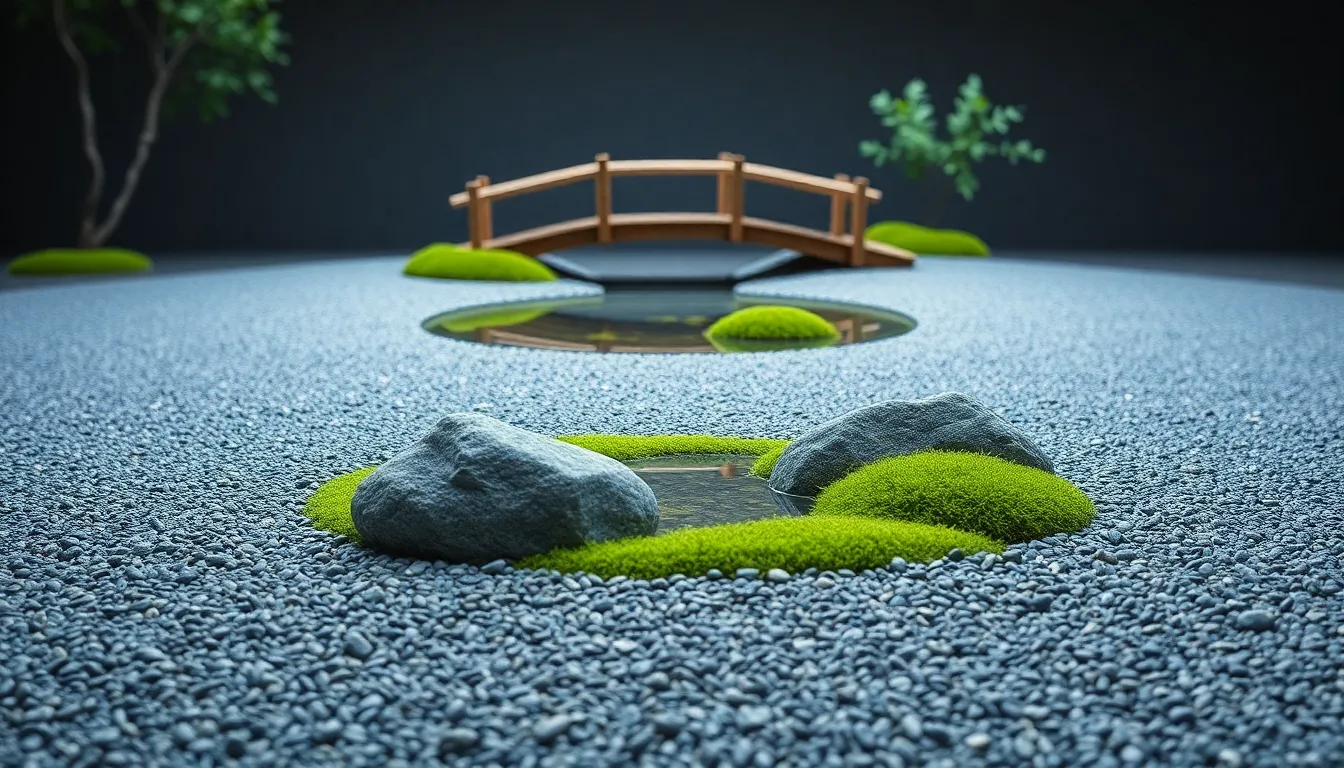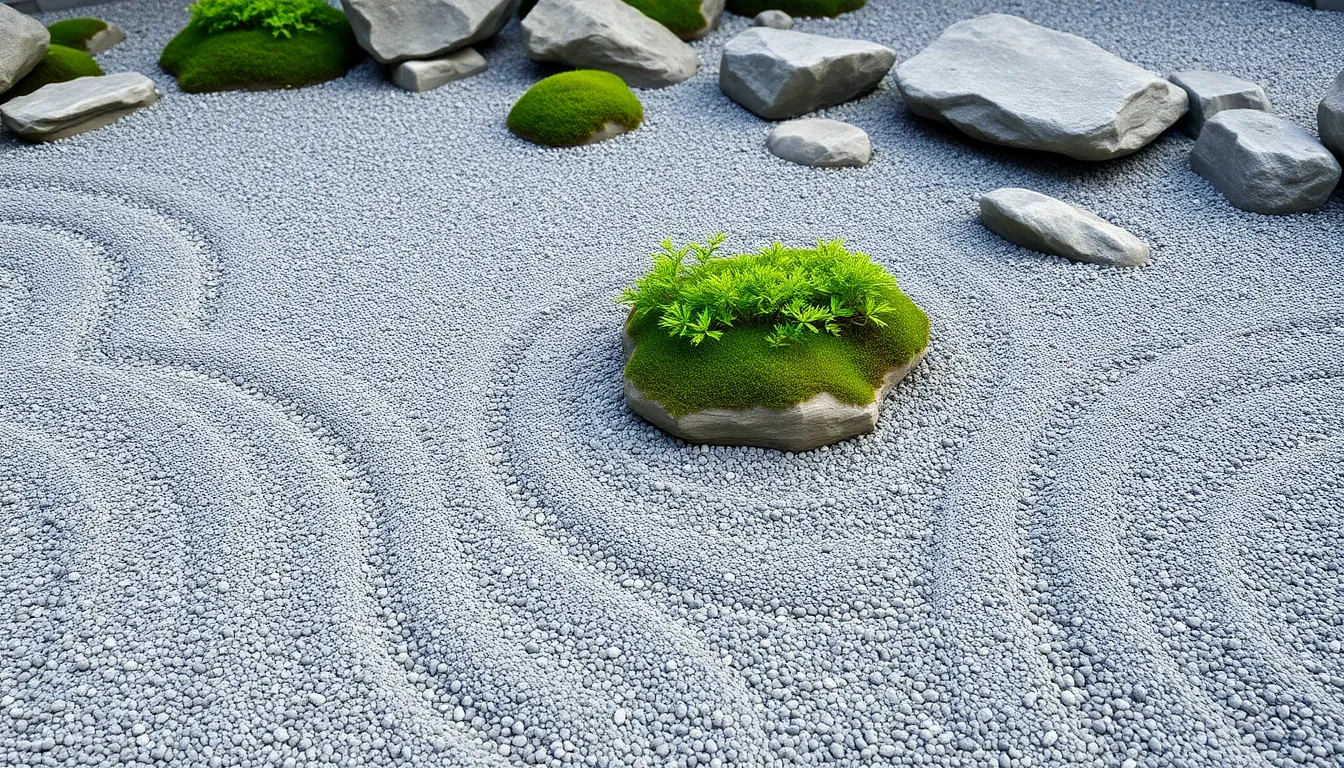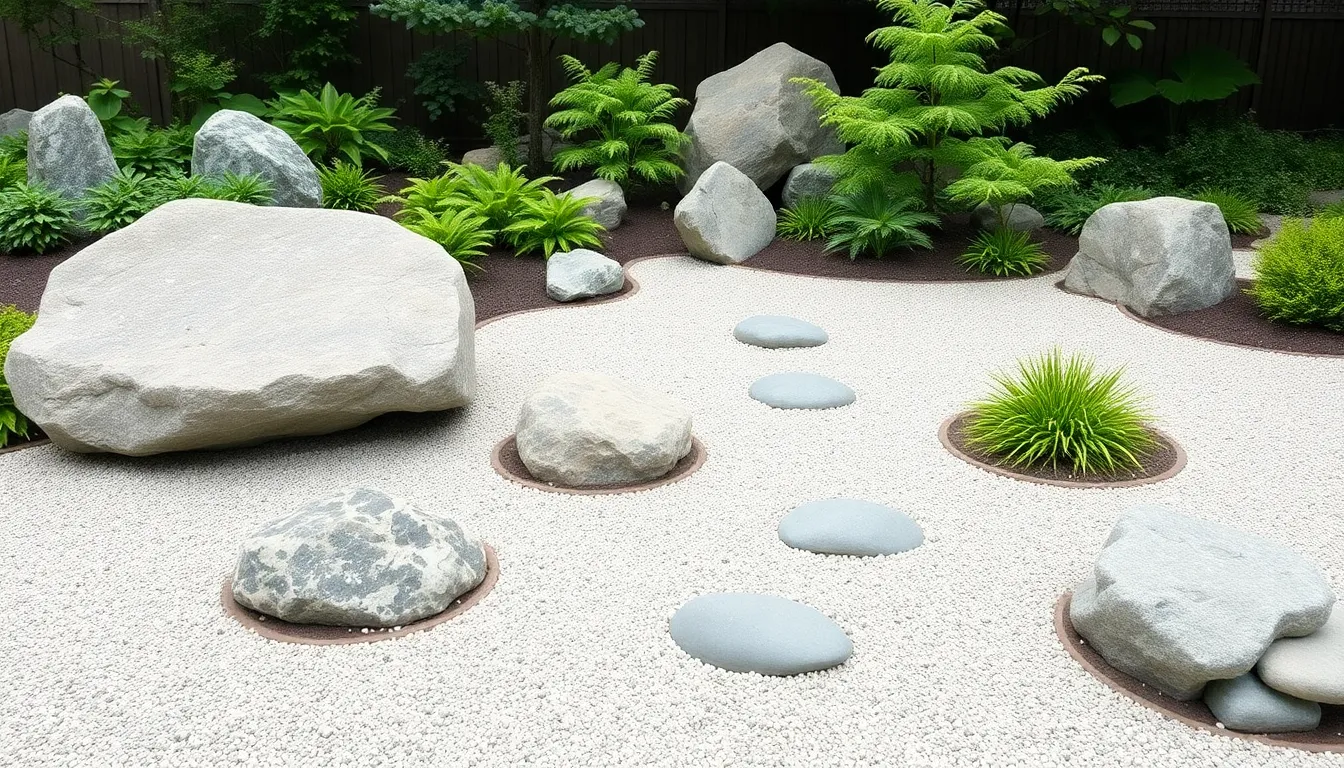Phone:
(701)814-6992
Physical address:
6296 Donnelly Plaza
Ratkeville, Bahamas.

Imagine stepping into a serene oasis where the chaos of everyday life melts away. Zen garden design isn’t just about raking gravel and arranging stones; it’s an art form that transforms outdoor spaces into tranquil retreats. Whether he’s a seasoned gardener or a curious novice, anyone can create a slice of paradise that whispers relaxation and mindfulness.
Zen garden design emphasizes simplicity and balance, attracting those seeking tranquility. Key elements include rocks, gravel, and carefully placed plants. These components create a serene space for meditation and contemplation.
Rocks symbolize mountains, while sand or gravel represents water. Raking patterns in the gravel mimics waves, enhancing the overall effect. Landscapers often arrange rocks in groups of threes, following traditional design principles that convey harmony.
Plants, like moss and small shrubs, add subtle greenery without overwhelming the space. Selecting plants with varying heights provides depth and visual interest. Interest increases when choosing native species that thrive in local conditions.
Attention to detail plays a crucial role in the design process. Designers consider the layout, ensuring accessibility while maintaining a sense of enclosure. Straight lines and curves guide the eye, inviting visitors to explore the garden further.
Paths within a Zen garden lead to focal points, such as a meditation bench or a sculpture. Paths made from natural stones or wood blend seamlessly with the surroundings. Natural materials enhance the garden’s overall calming ambiance.
Creating a Zen garden requires patience and foresight. Planning the layout before planting and arranging elements ensures a cohesive design. Seasonal changes introduce dynamic aspects, as plants bloom, fade, and interact with natural light.
Overall, the purpose of Zen garden design lies in fostering inner peace and enhancing mindfulness. It transforms outdoor spaces into intimate retreats that invite reflection. Many find that spending time in these gardens promotes relaxation and a deeper connection to nature.

Zen gardens incorporate several essential components that create their serene and balanced atmosphere. Elements such as rocks, gravel, and plants form the foundation of these tranquil spaces.
Rocks provide a grounding presence in Zen gardens. They symbolize mountains and evoke a sense of permanence. Placing stones in groups of threes enhances harmony and visual interest. Varieties like boulders, pebbles, and slate each contribute unique textures. Arranging larger rocks near smaller ones establishes depth and balance, while careful positioning draws the eye and emphasizes natural beauty.
Gravel and sand serve as representations of water, promoting a calming effect. Raked patterns mimic the movement of waves, offering a dynamic visual representation. White gravel often creates a striking contrast, enhancing the overall aesthetic. Regular maintenance keeps these elements crisp and inviting. Designers can experiment with textures and colors to evoke different moods, making each garden distinct.
Plant selection plays a critical role in Zen garden design. Choosing low-maintenance species, such as moss and small shrubs, underscores simplicity. These plants contribute subtle greenery without overwhelming the space. Consider native species that thrive in the local climate for enduring beauty. Carefully placed flora invites contemplation and enhances the garden’s peaceful ambiance, encouraging deeper connections with nature.
Designing a Zen garden requires a firm foundation in key principles that foster tranquility and mindfulness. The focus on simplicity and balance plays a critical role in creating a serene outdoor retreat.
Simplicity defines Zen garden design. Clean lines and uncluttered spaces allow for focused contemplation. Essential elements like gravel, rocks, and selected plants contribute to this minimalistic approach. Gravel carpets the ground, representing water with its smooth texture. Rocks serve as focal points, symbolizing strength. Plants add life without overwhelming the space, with species chosen for their low maintenance needs. A few well-placed boulders and carefully arranged stones help streamline visuals. Designers emphasize open areas that invite the eye to wander, promoting a calming ambiance. The overall aesthetic resonates with the idea of less being more.
Balance and harmony create an inviting atmosphere in Zen gardens. Arranging rocks in groups, typically in threes, results in a natural feel that encourages visual appeal. Curved and straight lines influence the movement through the space, guiding visitors. Incorporating plants in a way that complements the surrounding elements aids in achieving perfect symmetry. Designers strive for uniformity in color and texture, ensuring that no single component overwhelms the rest. Paths made from natural materials connect different areas, inviting exploration while maintaining equilibrium. By balancing hard and soft elements, the garden transforms into a cohesive sanctuary for reflection and peace.

Designing a Zen garden requires careful thought and intention. It serves as a personal retreat where tranquility reigns and contemplation unfolds.
Begin by identifying the available space. Consider dimensions and natural features surrounding the area. Next, sketch a rough design that includes focal points, such as pathways, seating, or water features. Groups of three rocks create harmony, while varied plant clusters add visual interest without clutter. Choose smooth, flowing lines for paths to enhance movement and accessibility. Incorporate areas for sand or gravel to symbolize water. Define boundaries using natural barriers or plants to create an intimate atmosphere.
Regular upkeep maintains the calming essence of the garden. Raking gravel into patterns mimics waves, ensuring visual dynamics persist. Remove debris and weeds to preserve cleanliness and encourage growth. Water plants minimally, respecting their low-maintenance nature. Prune selectively to retain balance and harmony. Seasonal changes offer opportunities for adjusting arrangements or colors, keeping the garden fresh and inviting. Lastly, reflect on the space periodically, allowing personal insights to shape its evolution and deepen relaxation.
Zen garden design offers a unique opportunity to create a serene retreat that fosters mindfulness and relaxation. By focusing on simplicity balance and the thoughtful arrangement of natural elements gardeners can cultivate a space that invites contemplation. Each component from rocks to plants plays a vital role in establishing a tranquil atmosphere that resonates with nature.
As individuals embark on their Zen garden journey they should embrace creativity while remaining attentive to detail. Regular maintenance not only preserves the garden’s beauty but also enhances the personal connection to this peaceful sanctuary. Ultimately a well-designed Zen garden serves as a timeless reminder of the harmony found in nature and within oneself.